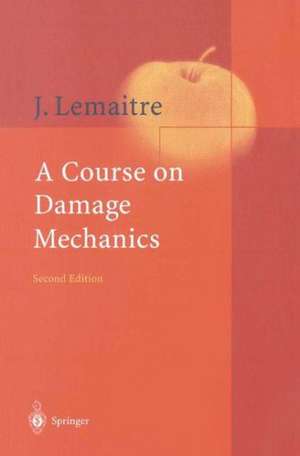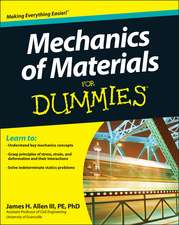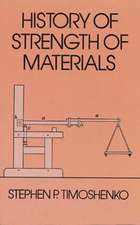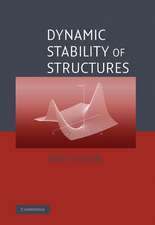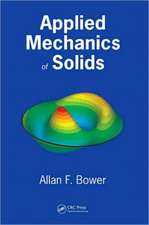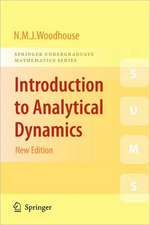A Course on Damage Mechanics
Autor Jean Lemaitre Cuvânt înainte de H. Lippmannen Limba Engleză Paperback – 14 iun 1996
Preț: 582.99 lei
Preț vechi: 685.87 lei
-15% Nou
Puncte Express: 874
Preț estimativ în valută:
111.55€ • 116.78$ • 92.30£
111.55€ • 116.78$ • 92.30£
Carte tipărită la comandă
Livrare economică 07-21 aprilie
Preluare comenzi: 021 569.72.76
Specificații
ISBN-13: 9783540609803
ISBN-10: 3540609806
Pagini: 252
Ilustrații: XIX, 228 p. 39 illus.
Dimensiuni: 155 x 235 x 13 mm
Greutate: 0.39 kg
Ediția:2nd rev. and enlarged ed.
Editura: Springer Berlin, Heidelberg
Colecția Springer
Locul publicării:Berlin, Heidelberg, Germany
ISBN-10: 3540609806
Pagini: 252
Ilustrații: XIX, 228 p. 39 illus.
Dimensiuni: 155 x 235 x 13 mm
Greutate: 0.39 kg
Ediția:2nd rev. and enlarged ed.
Editura: Springer Berlin, Heidelberg
Colecția Springer
Locul publicării:Berlin, Heidelberg, Germany
Public țintă
ResearchCuprins
1 Phenomenological Aspects of Damage.- 1.1 Physical Nature of the Solid State and Damage.- 1.2 Mechanical Representation of Damage.- 1.3 Measurement of Damage.- 2 Thermodynamics and Micromechanics of Damage.- 2.1 Three-Dimensional Analysis of Isotropic Damage.- 2.2 Analysis of Anisotropic Damage.- 2.3 Micromechanics of Damage.- 3 Kinetic Laws of Damage Evolution.- 3.1 Unified Formulation of Damage Laws.- 3.2 Brittle Damage of Metals, Ceramics, Composites and Concrete.- 3.3 Ductile and Creep Damage of Metals and Polymers.- 3.4 Fatigue Damage.- 3.5 Damage of Interfaces.- 3.6 Table of Material Parameters.- 4 Analysis of Crack Initiation in Structures.- 4.1 Stress-Strain Analysis.- 4.2 Uncoupled Analysis of Crack Initiation.- 4.3 Locally Coupled Analysis.- 4.4 Fully Coupled Analysis.- 4.5 Statistical Analysis with Microdefects.- History of International Damage Mechanics Conferences.- Authors and Subject Index.
Textul de pe ultima copertă
This well-established textbook teaches macroscopic modeling for design, processing, testing, and control of mechanical components in engineering. The first chapter deals with the phenomenology of damage; the second couples damage to strains and covers the three-dimensional situation; the third is devoted to kinetic laws of damage evolution used by the author to unify many models; the fourth gives several methods for predicting crack initiation. Detailed calculations and many exercises help students to apply the powerful techniques to practical problems in engineering.
This second, corrected and enlarged edition also includes the damage of interfaces and statistical damage analysis with microdefects.
This second, corrected and enlarged edition also includes the damage of interfaces and statistical damage analysis with microdefects.
